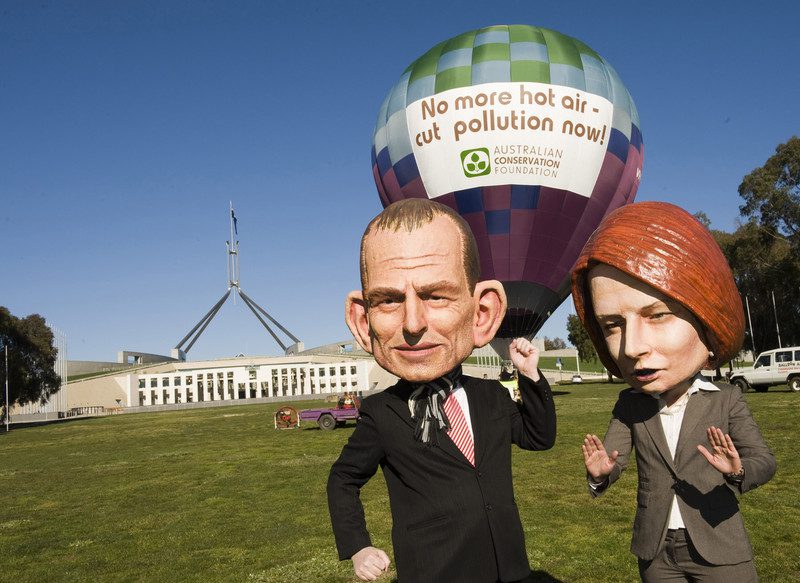Using media stunts
Chicken suits, big heads and banners
A media stunt is an event designed to attract media attention by providing a good photo opportunity. Media stunts are often used by experienced campaigners and even by politicians. The good news is anyone with a bit of creativity can stage a great media stunt.
An effective stunt doesn’t necessarily require extensive props or an elaborate set-up. The objective is simply to provide a visual illustration which can be easily described in a sentence or understood in one glance at a photo.
And sometimes it just comes down to luck. There are only a certain number of media reporters and if you are competing with other major news stories on a particular day, your stunt might performed to a very limited audience.
Brainstorm
Think about your issue and the message that you want to convey. Try to make that message as simple and easy-to-understand as possible. Then think about the kind of visual images that you could use to communicate this message.
Think big and be ambitious but also think about what is realistic and achievable. Take into consideration the resources that you have available to you. Think about the kind of props you could use. The more clever, or funnier, your stunt is, the more likely you are to catch the media’s attention. And remember a picture is worth a thousand words!
Does it pass the ‘no idea’ test?
Think about your stunt from an outsider’s perspective. Would someone with little awareness of the issue understand the point you are trying to make? If not, how can you simplify the message while retaining its impact?
Timing is important
Try to ensure that you are not planning your stunt at a time when another major event is scheduled. The less competition for the media’s attention, the better. You can even call the major television stations and newspapers in the lead up to your stunt and ask if they are aware of any major events around on the same time.
The best time to schedule a stunt if you want TV coverage, or press coverage the following day, is in the morning or early afternoon. Journalists have to return to the office to compile their stories and images by late afternoon.
Tell the media
It may seem obvious, but if you want the media to attend your stunt, you need to tell them about it! There are a number of ways to do this.
One is to send media organisations a ‘media alert’. A media alert is simply a document which sets out the basic details of your event in a couple of lines. It should state what the event is, when it is and where it is. The objective is to catch the media’s attention with an interesting or witty headline.
Alternatively, you can simply use a media release and include the details of your stunt in that (see writing a press release).
It is also a good idea to telephone key media organisations to provide some background information on your stunt. Ask to speak to a journalist who might be assigned to your story and explain to them what you are doing and what you hope to achieve. If the journalist has a bit of background about you and the issue, they are more likely to come along.
Rent a crowd
It’s not absolutely necessary to have an audience for your stunt but often it can help. By having a crowd, you help to convey the message that there is broad community support for your issue. It can also help to create a sense of excitement which can boost the chances of the stunt being supported. Finally, it provides more visual footage for television cameras which require more than one image.
Become your own reporter
Don’t be discouraged if the television cameras don’t turn up to your stunt. Even the most experienced campaigners and politicians experience this from time to time. If this occurs, it’s time to become your own reporter!
Make sure you take your own camera to the stunt so you can capture some good images. Write your own newspaper story and send it, together with some photos, to the media you are targeting. This may prompt them to do a story on the stunt even if they didn’t cover it at the time.
You can also use spread your message by posting the photos of your stunt online. Use as many avenues as you can, including your organisation’s website, your own website, MySpace or Facebook page, picture websites, such as Flickr, even simply emailing your family and friends.
Try not to break the law
While making a statement is clearly important, landing yourself in jail isn’t likely to help your cause. Know where to draw the line. Check laws, by-laws and regulations that might get between you and your stunt.
